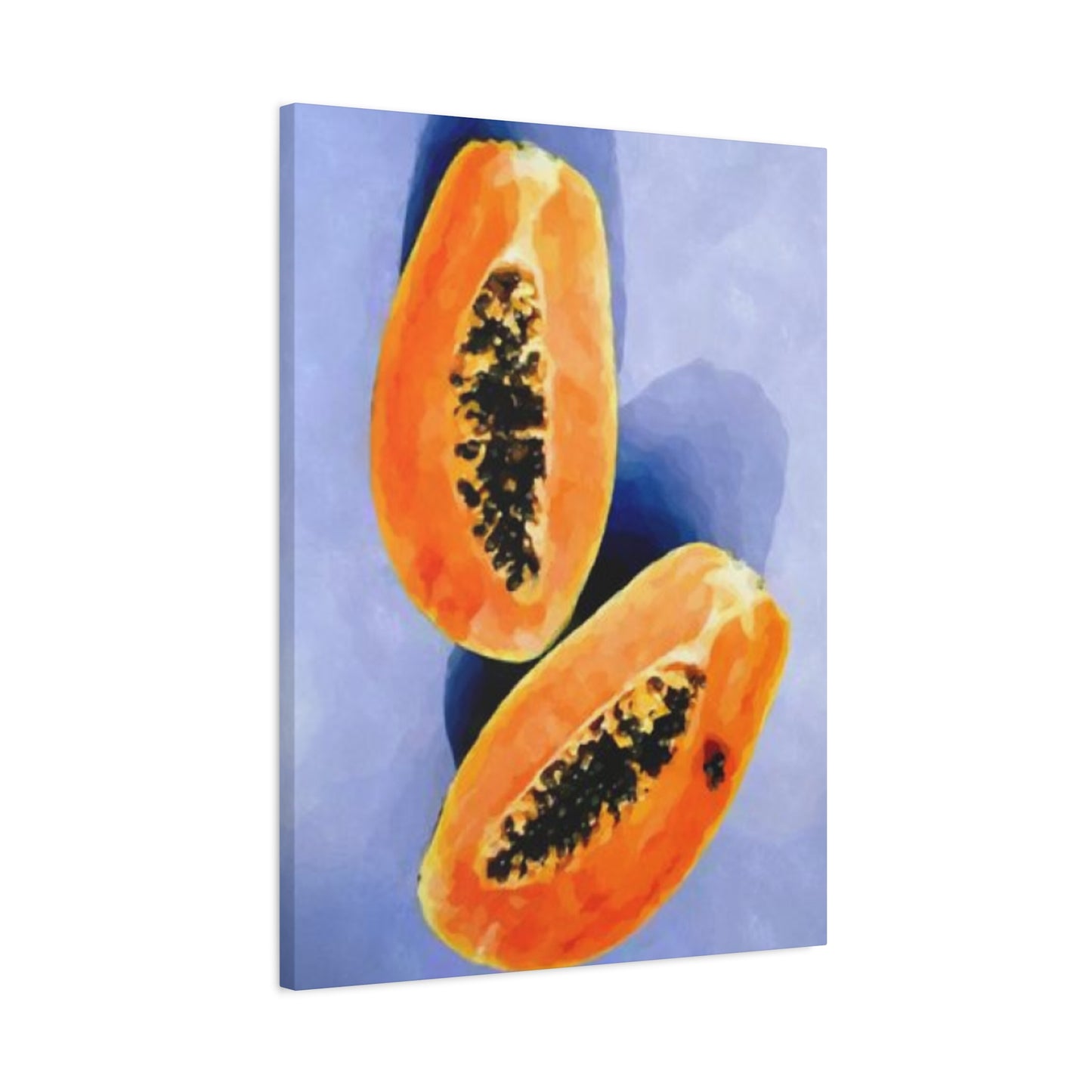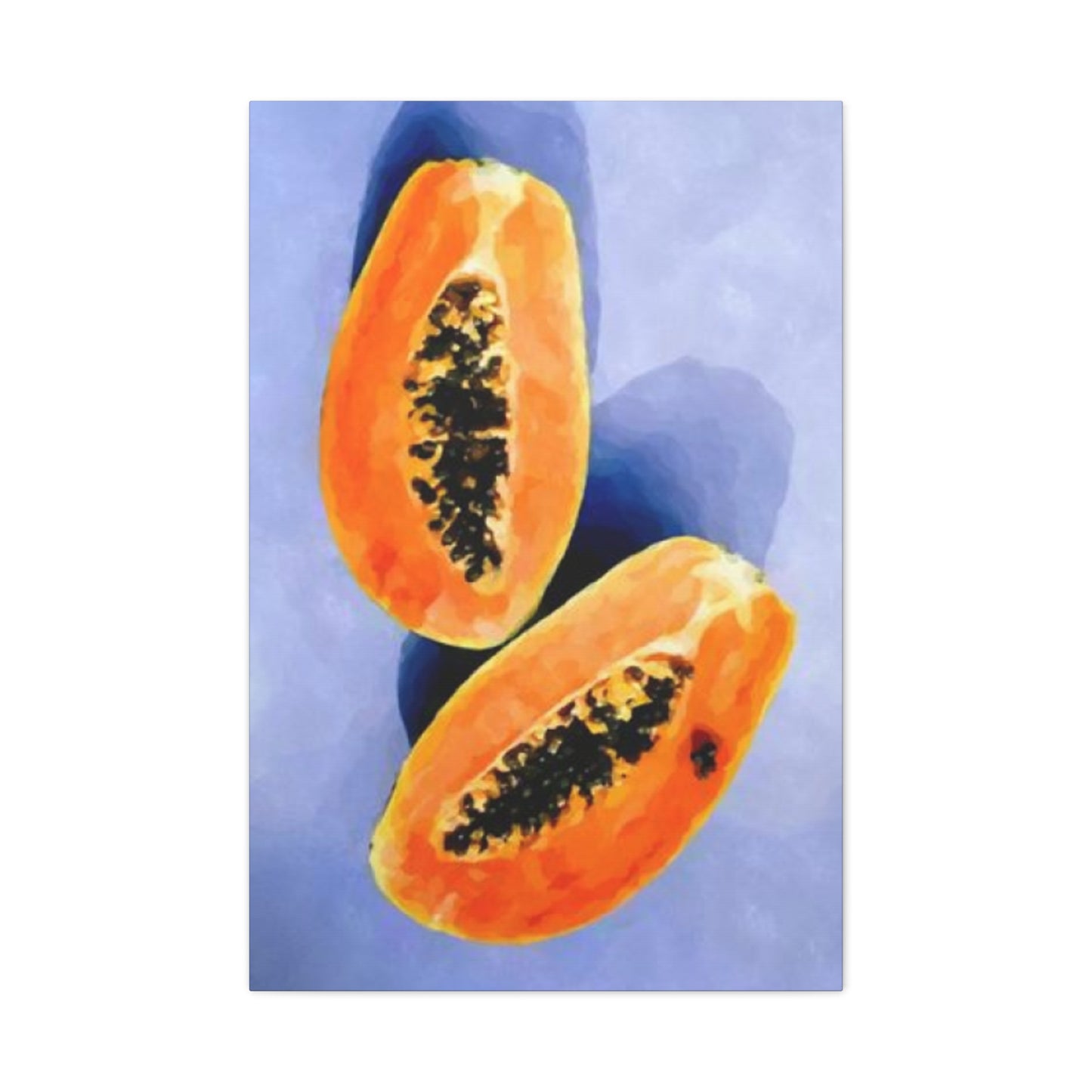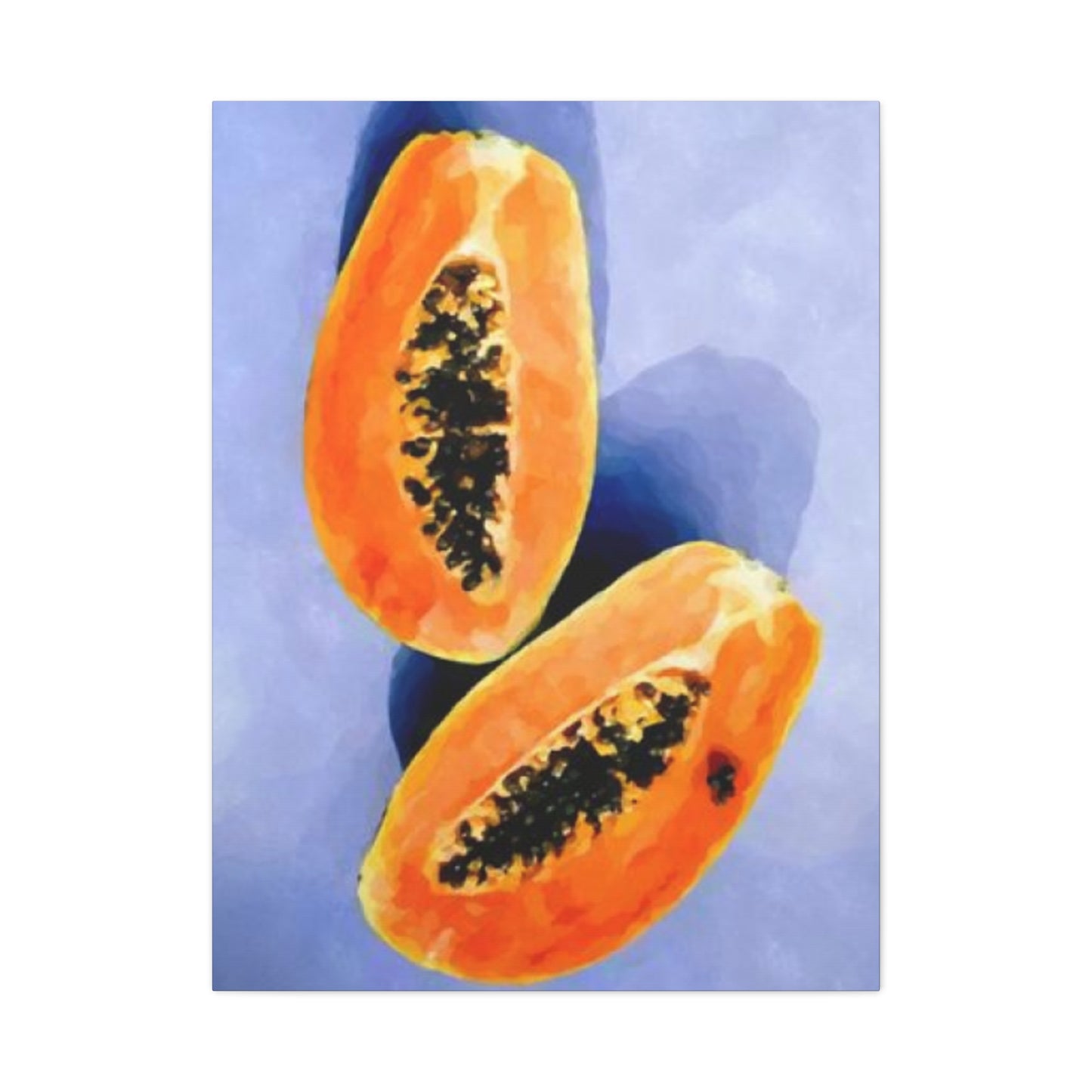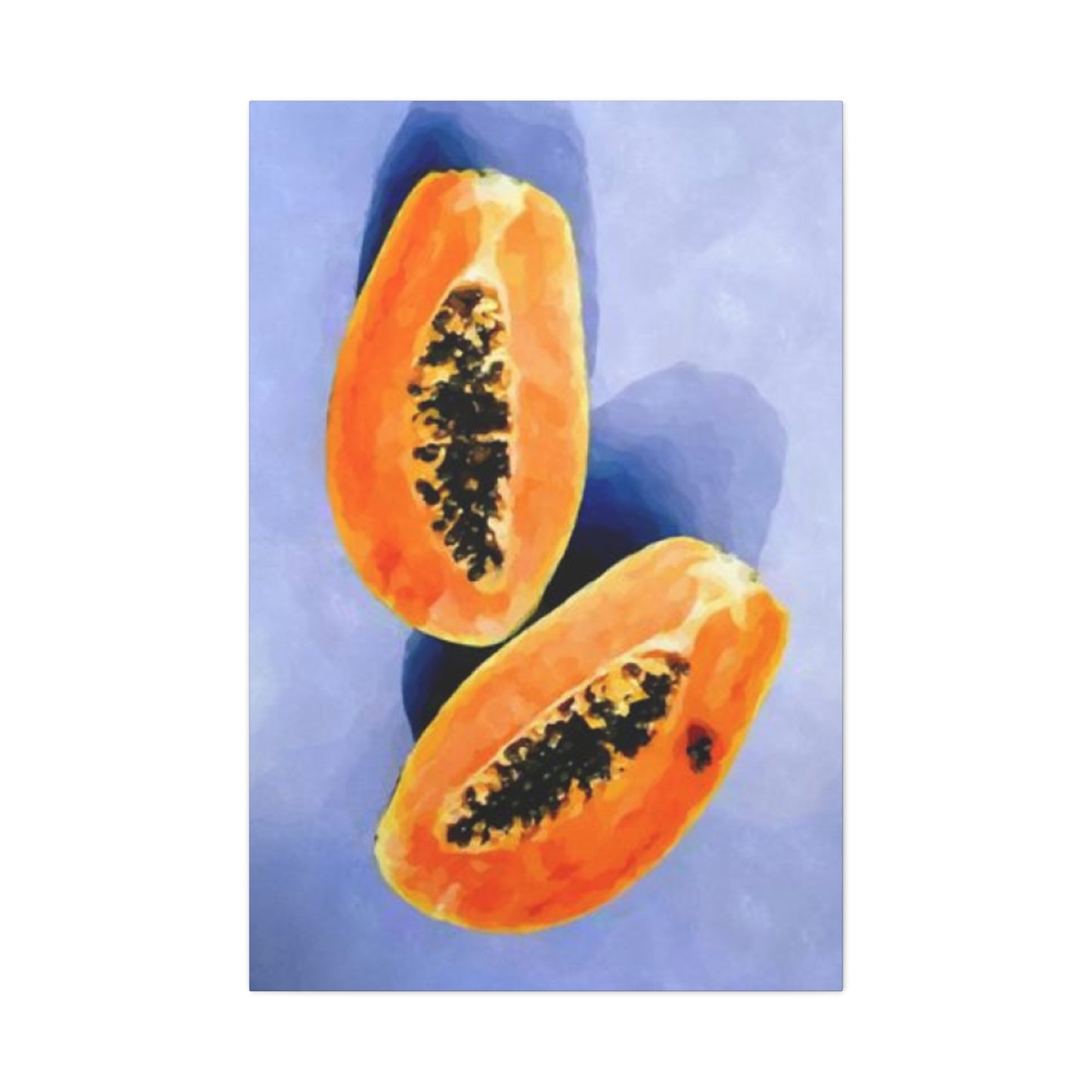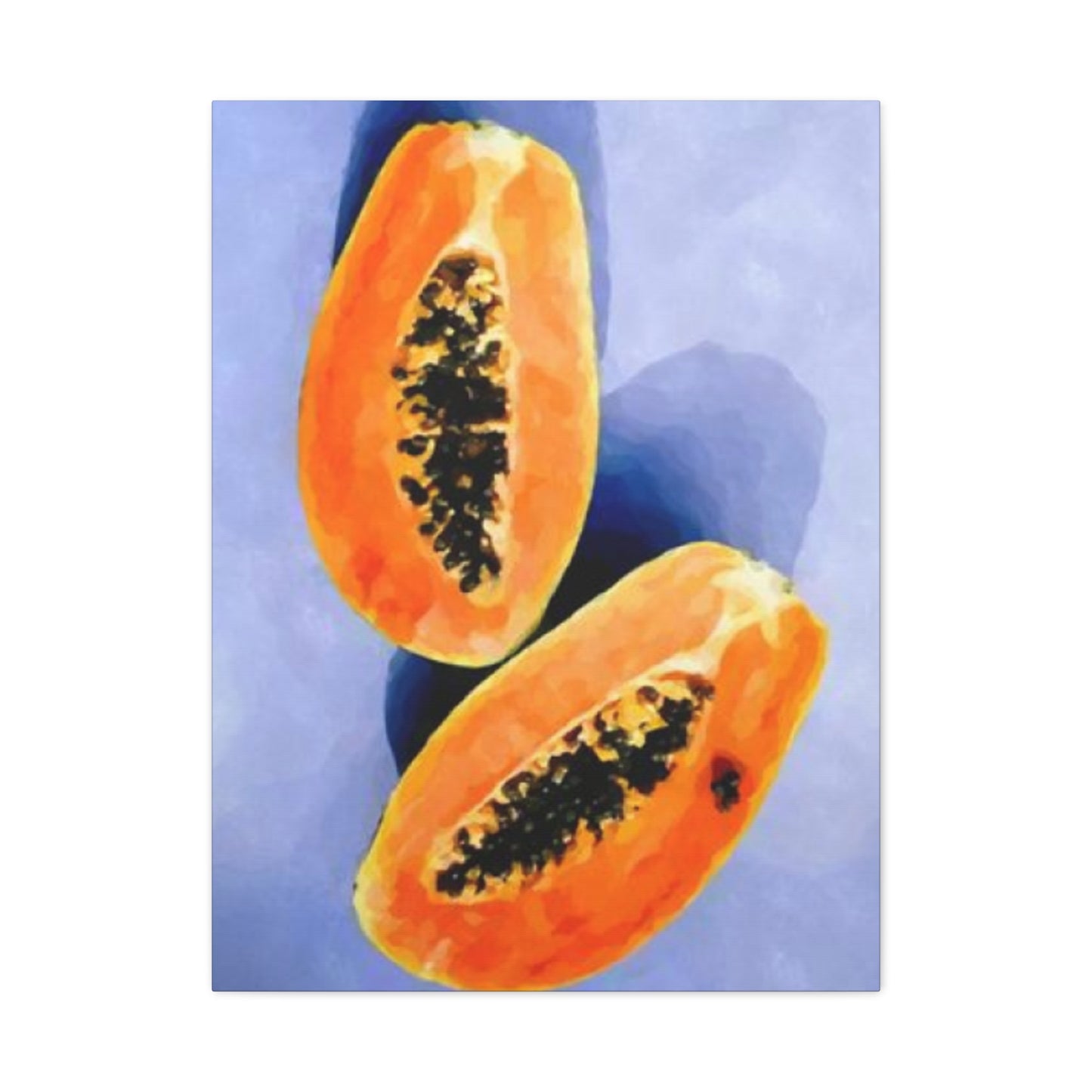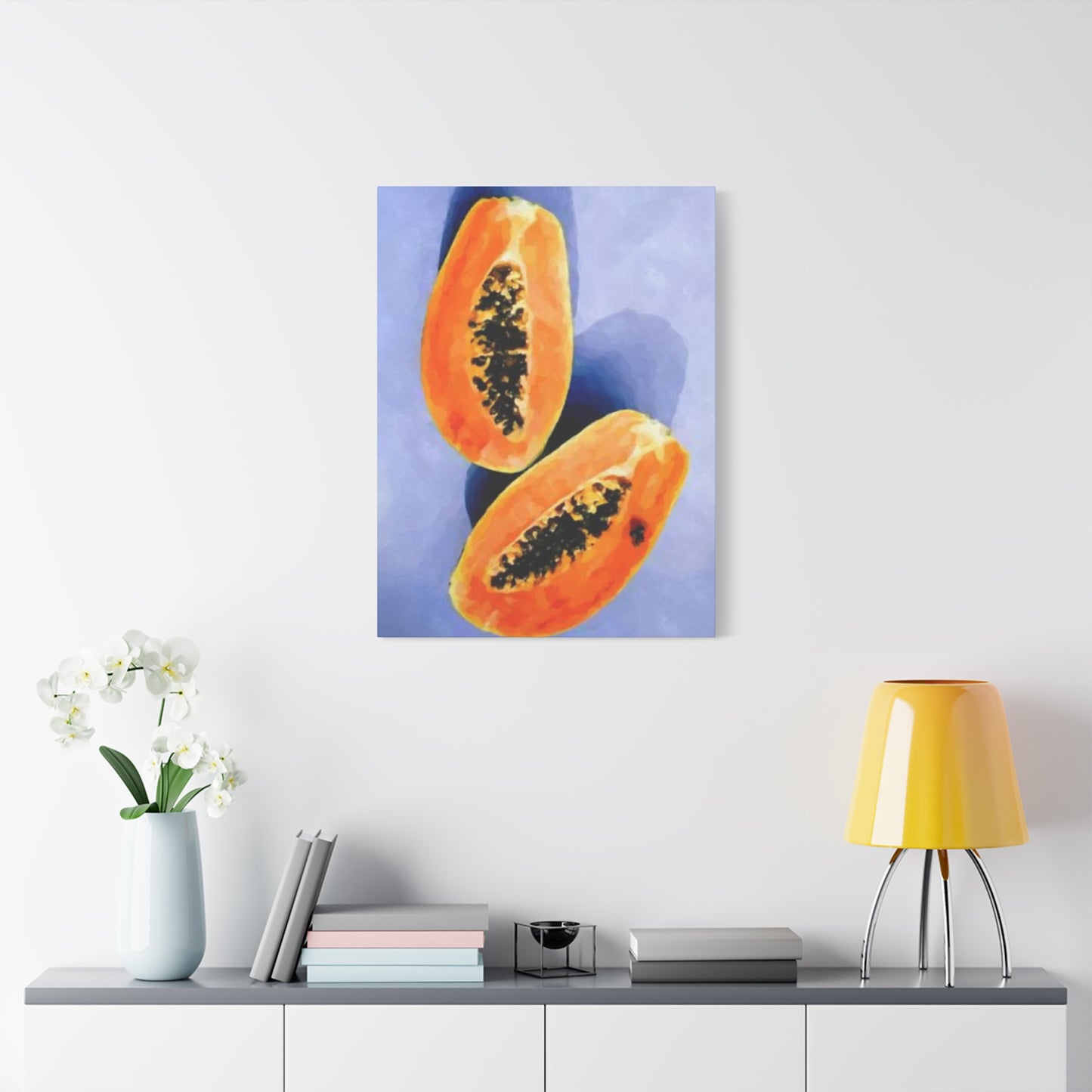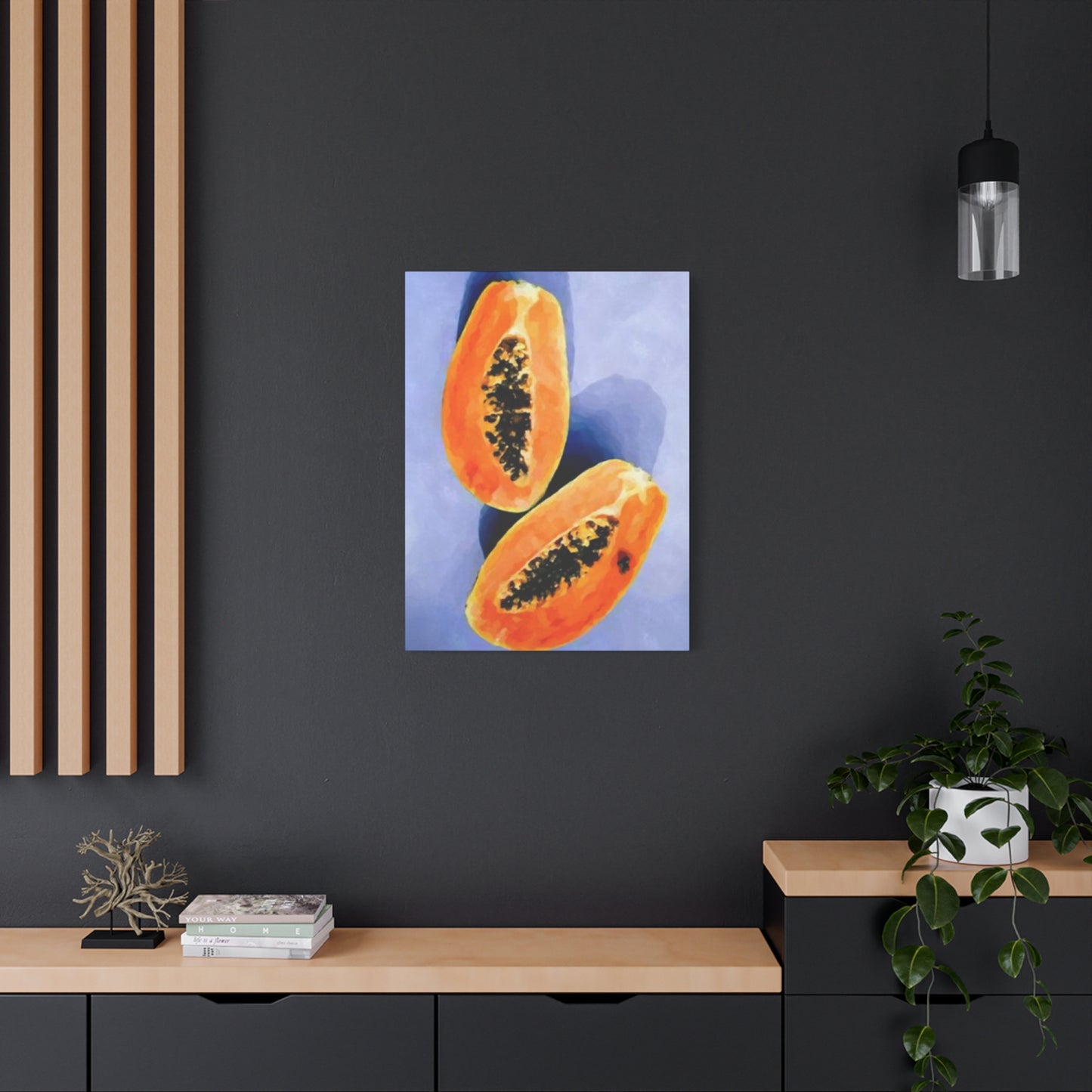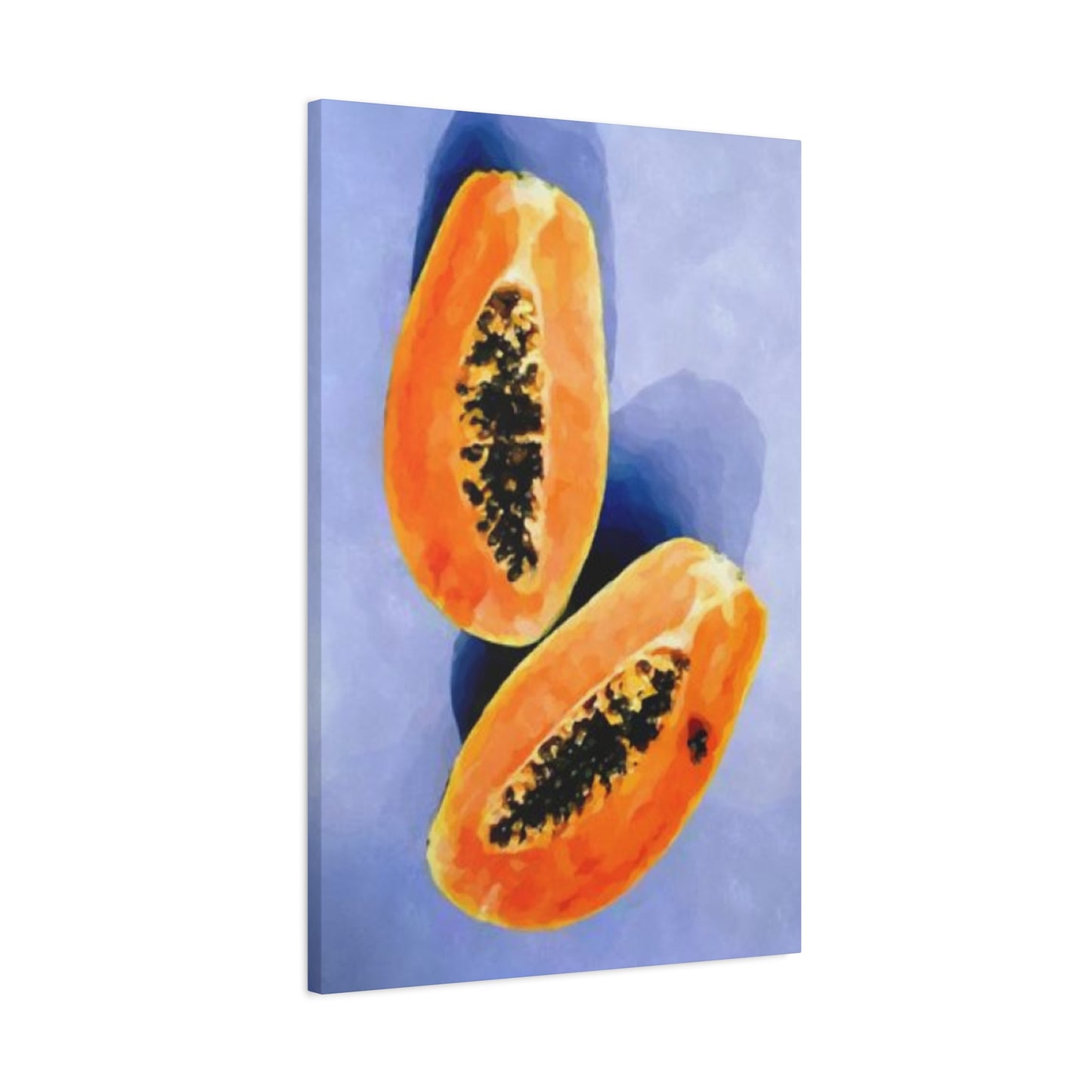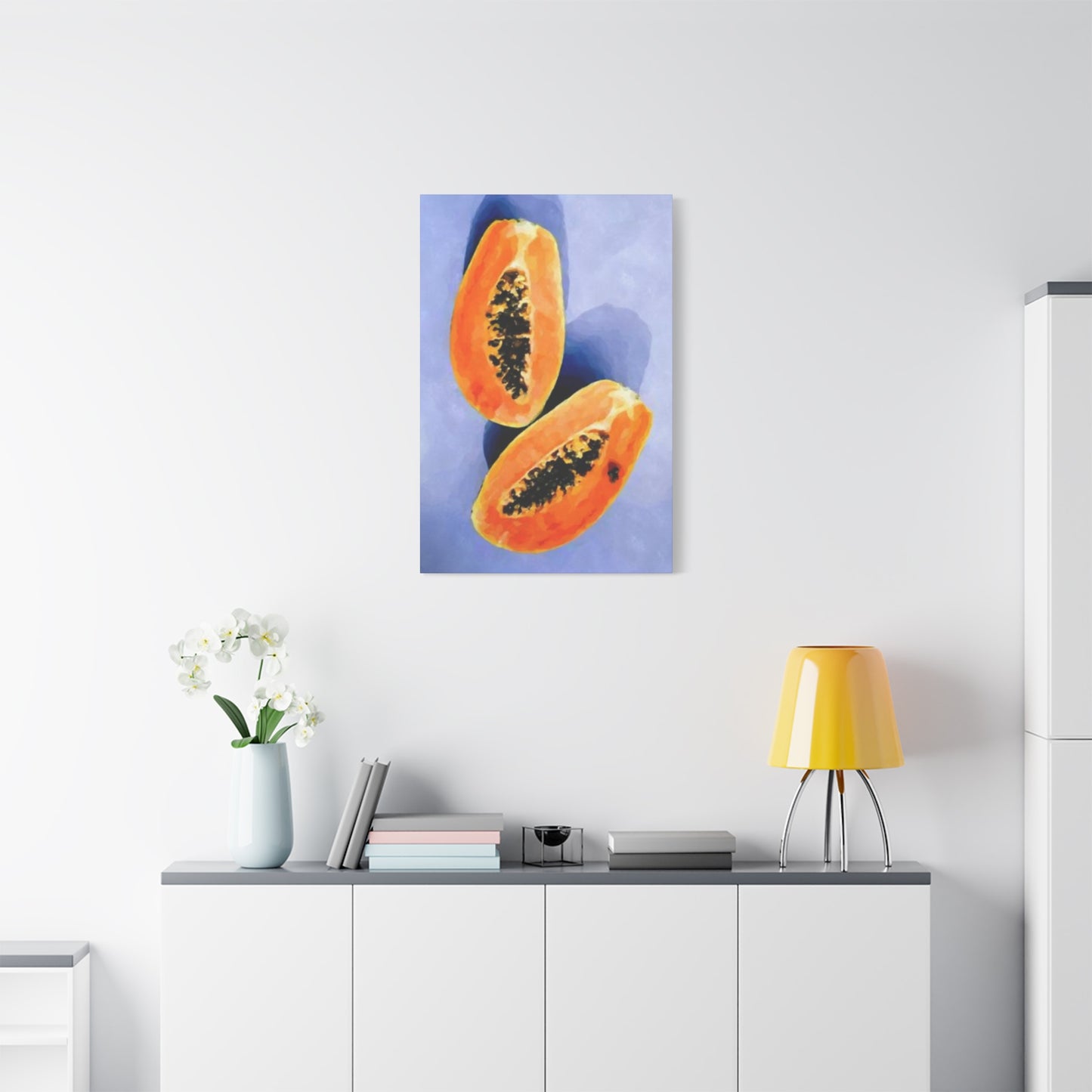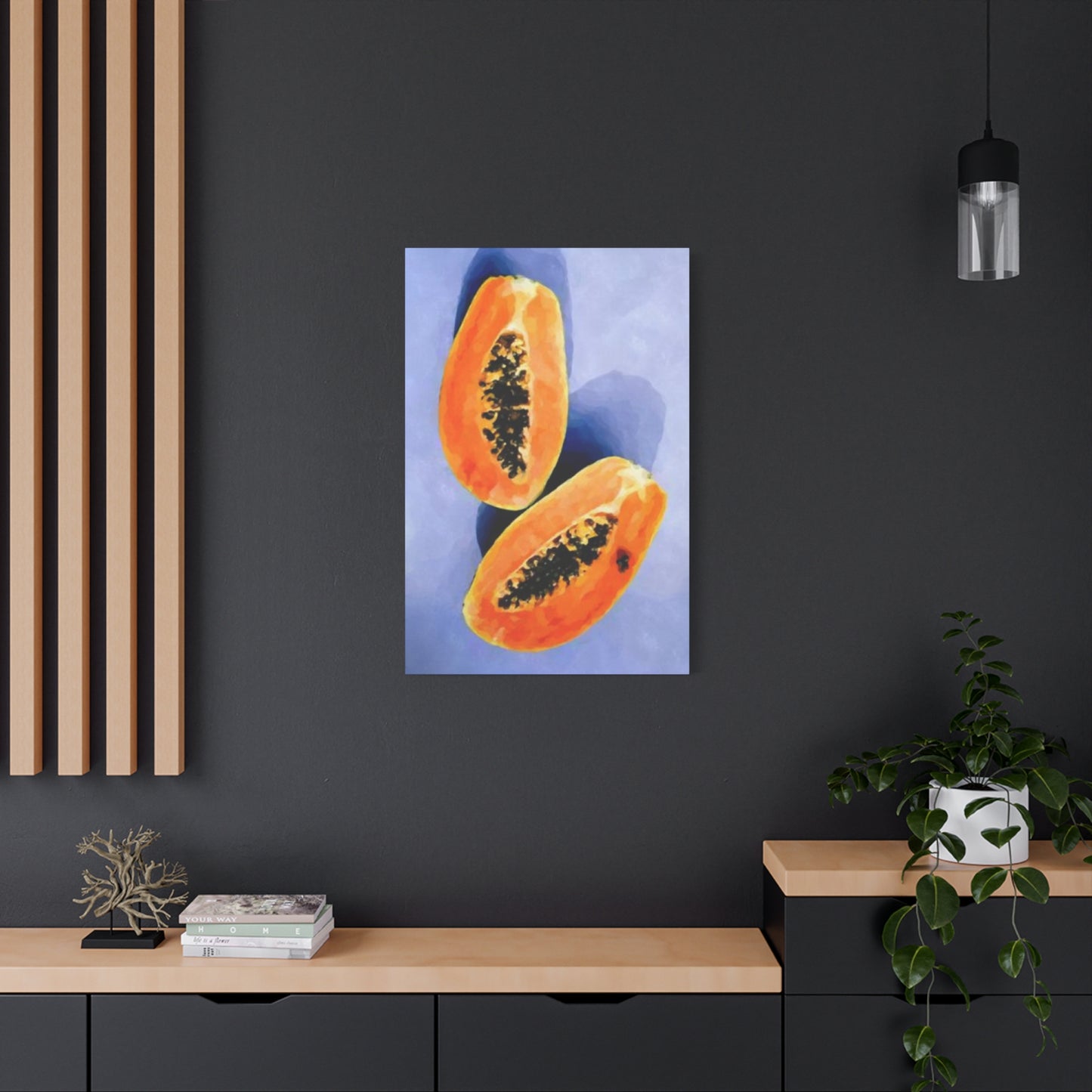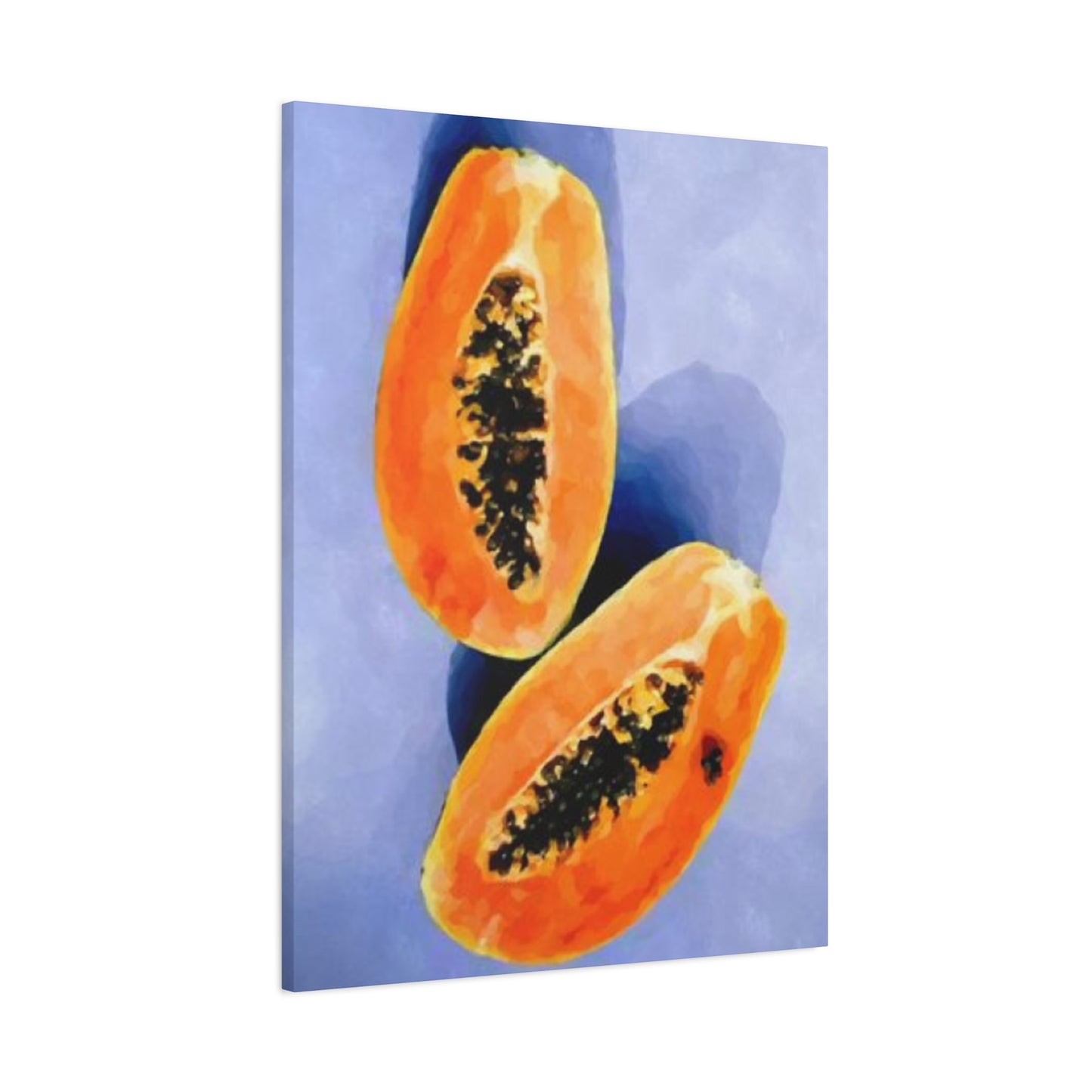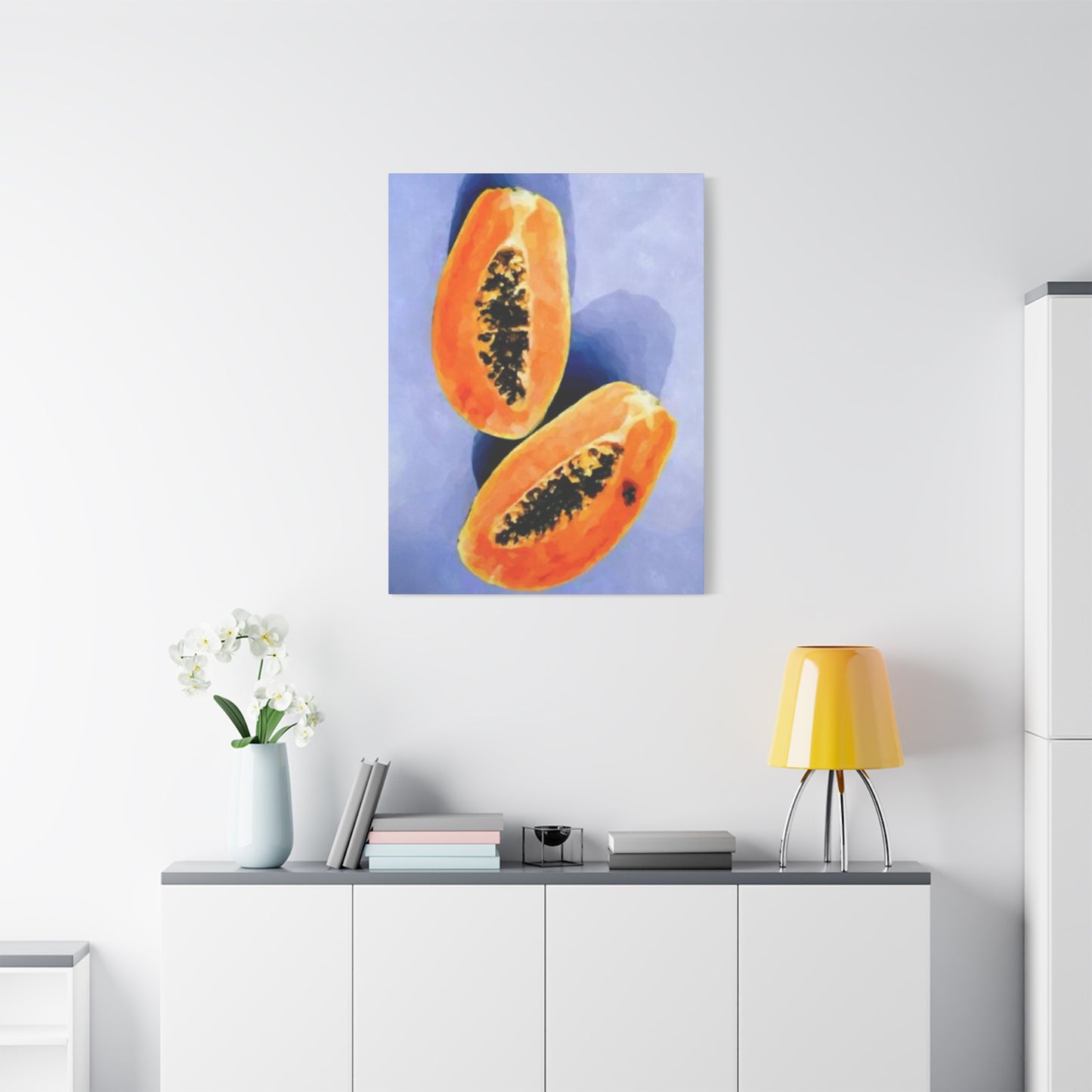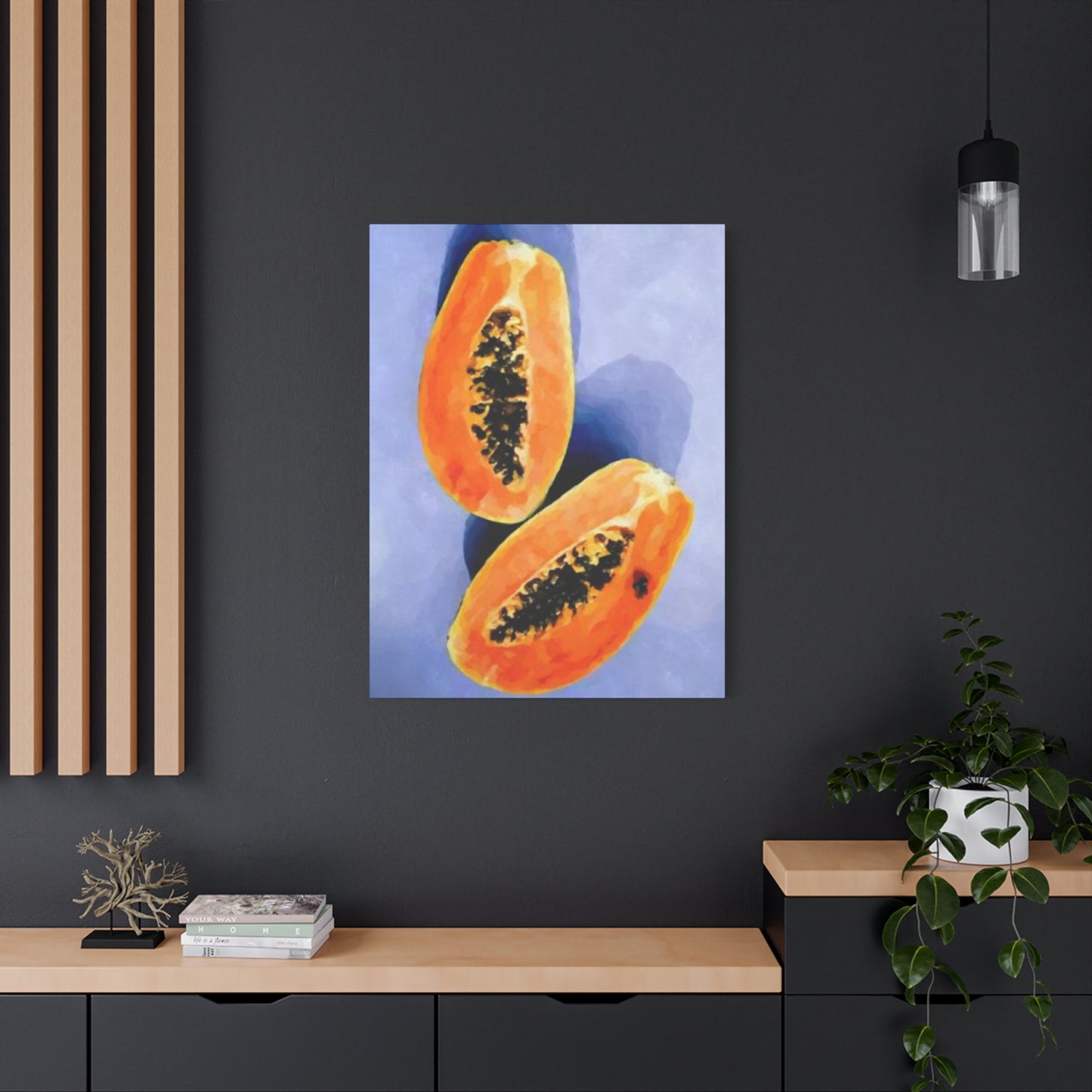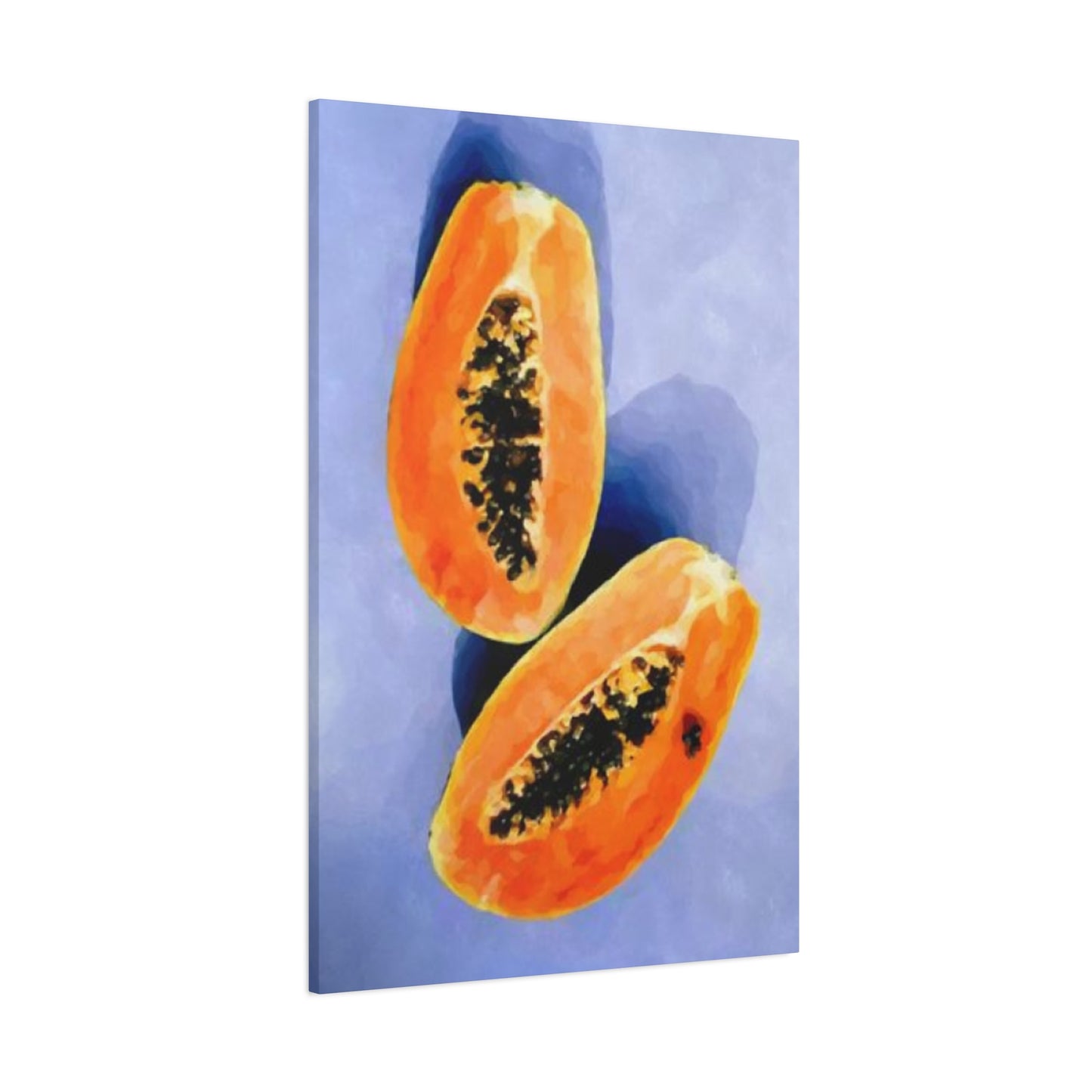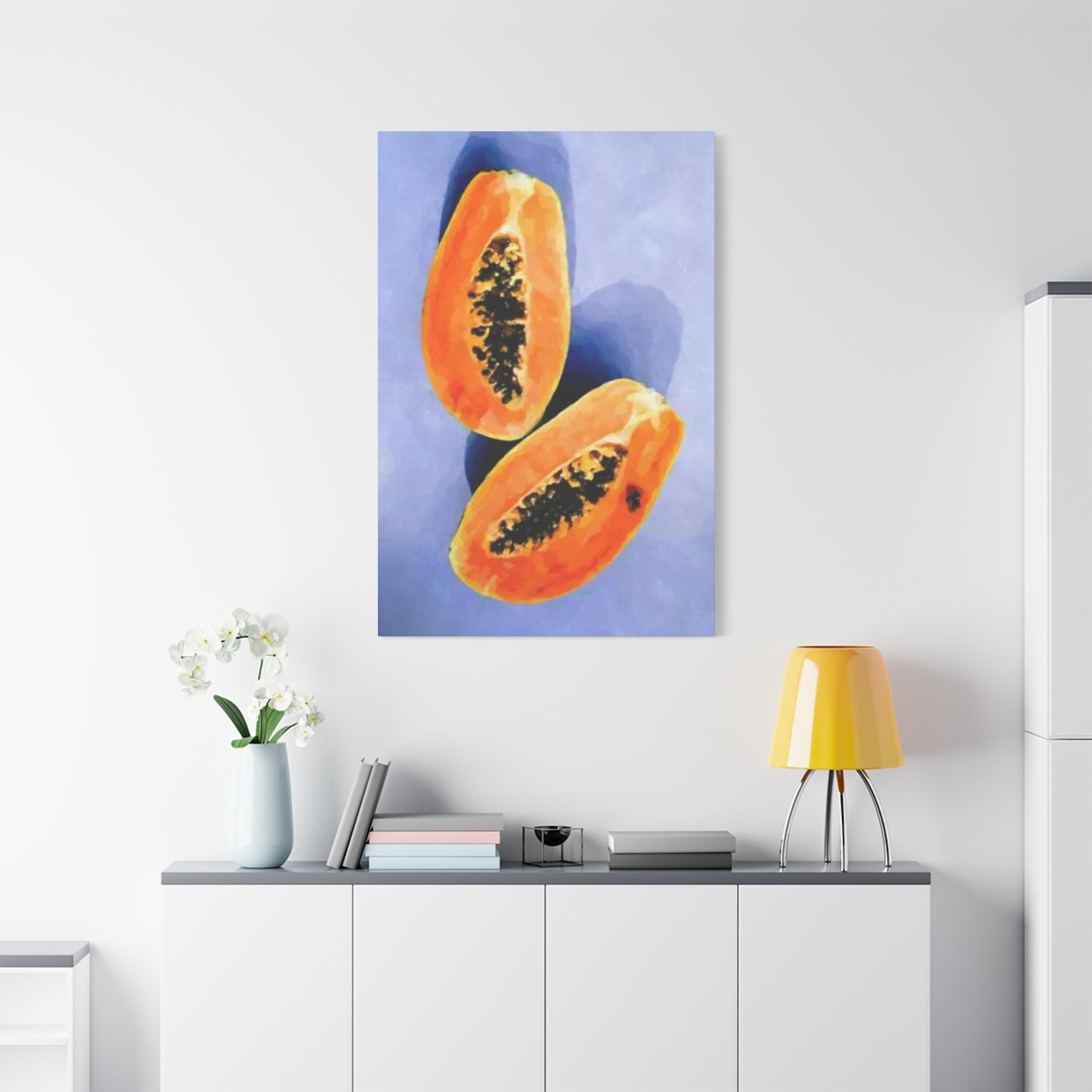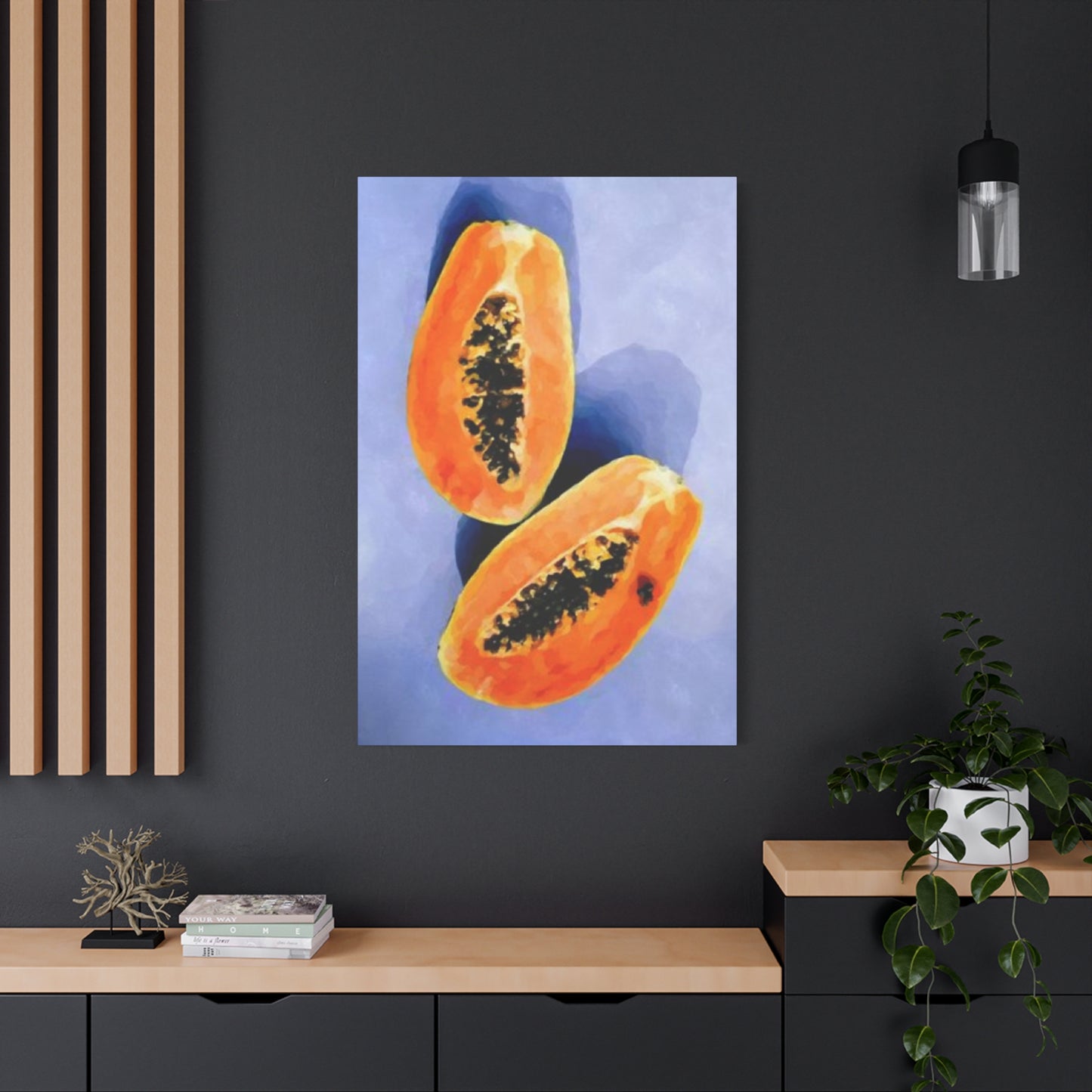The Ultimate Guide to Papaya Wall Art: Transform Your Home with Tropical Vibes
The rising popularity of botanical and fruit-inspired interior design has brought exotic elements into contemporary homes worldwide. Among these trending decorative choices, papaya-themed wall art stands out as a remarkable way to infuse your living environment with warmth, energy, and natural beauty. This unique approach to home decoration combines the lush appeal of tropical landscapes with modern aesthetic sensibilities, creating spaces that feel both refreshing and sophisticated.
Papaya wall art encompasses various artistic representations of this beloved tropical fruit, from photorealistic depictions showcasing the vibrant orange flesh and black seeds to abstract interpretations emphasizing bold colors and organic shapes. These decorative pieces serve multiple purposes beyond mere ornamentation, functioning as mood enhancers, conversation starters, and visual anchors that tie together diverse design elements within a room. Whether displayed in kitchens, dining areas, living rooms, bedrooms, or even office spaces, these artistic representations of papaya bring an unmistakable sense of vitality and warmth that few other decorative choices can match.
The versatility of papaya wall art makes it suitable for various interior design styles, from minimalist Scandinavian aesthetics to maximalist bohemian arrangements. The natural color palette associated with papaya includes warm oranges, sunny yellows, deep greens, and earthy browns, providing designers and homeowners with a rich spectrum of hues that complement numerous existing color schemes. Additionally, the symbolic associations of papaya with health, abundance, and tropical paradise add layers of meaning to these decorative choices, making them particularly appealing for those seeking to create spaces that feel both beautiful and meaningful.
Fresh and Vibrant Papaya Wall Art
The concept of freshness in interior design relates directly to how spaces make inhabitants feel upon entering them. Fresh and vibrant papaya wall art achieves this effect through careful attention to color saturation, composition, and subject matter selection. These pieces typically feature recently harvested papayas with their characteristic glossy skin, dewdrops suggesting morning harvest, or cross-sections revealing the jewel-like interior with its contrasting orange flesh and dark seeds arranged in intricate patterns.
Artists creating fresh papaya wall art often employ techniques that emphasize the fruit's natural luminosity. Watercolor artists might use transparent layers to capture the translucent quality of ripe papaya flesh, while photographers specializing in food art utilize careful lighting to highlight the fruit's textural details and color gradations. Digital artists can enhance these qualities further, creating hyperrealistic representations that seem to glow from within, making the fruit appear almost tangible to viewers.
The psychological impact of displaying fresh papaya imagery in living spaces extends beyond aesthetic appreciation. Research in environmental psychology suggests that representations of fresh produce and natural foods can subtly influence eating habits and overall wellbeing. Rooms decorated with vibrant fruit imagery often feel more welcoming and energizing, making them ideal for spaces where families gather or where morning routines begin. The association between fresh papaya and healthy living creates a positive subliminal message that resonates with health-conscious individuals.
When selecting fresh and vibrant papaya wall art, consider the surrounding environment and existing color palette. These pieces work exceptionally well in spaces with neutral backgrounds, where the vibrant colors can truly pop without visual competition. White walls, light gray surfaces, or natural wood finishes provide ideal backdrops for showcasing the intense oranges and greens characteristic of papaya imagery. However, these pieces can also create striking contrasts when placed against darker backgrounds, particularly deep navy, charcoal, or forest green walls.
The size and scale of fresh papaya wall art significantly influence its impact within a room. Large-scale pieces featuring close-up details of papaya flesh or dramatic compositions with multiple fruits create bold focal points that immediately draw the eye. Medium-sized works function well as part of gallery walls or paired arrangements, while smaller pieces can be grouped in series to create visual rhythm and movement. Consider the viewing distance when selecting size; artwork meant to be appreciated from across a room should be proportionally larger than pieces intended for close inspection in intimate spaces.
Framing choices for fresh papaya wall art should complement rather than compete with the artwork itself. Simple frames in natural materials like light wood or bamboo enhance the organic feel of the subject matter, while sleek metal frames in gold, copper, or brushed brass can add an element of sophistication. For contemporary spaces, floating frames or frameless mounting options allow the artwork to blend seamlessly with modern architectural elements. The matting color, if used, should be carefully selected to either match the background tones within the artwork or provide subtle contrast without overwhelming the composition.
Lighting plays a crucial role in maximizing the impact of fresh and vibrant papaya wall art. Natural light during daytime hours brings out the true vibrancy of the colors, making these pieces particularly effective near windows or in sunlit rooms. However, direct sunlight should be avoided to prevent fading over time. For evening viewing, adjustable accent lighting or picture lights can be positioned to illuminate the artwork without creating glare, ensuring the colors remain vivid and the details visible regardless of the time of day.
Bring Tropical Vibes with Papaya Prints
Tropical design aesthetics have experienced remarkable growth in popularity across residential and commercial interiors, driven partly by desires for escapism and connection to nature. Papaya prints serve as accessible entry points for incorporating tropical vibes into living spaces without requiring extensive renovation or complete design overhauls. These artistic pieces instantly transport viewers to sun-soaked destinations, creating atmospheric shifts that make everyday spaces feel like vacation retreats.
The tropical design movement encompasses various stylistic approaches, from vintage tiki-inspired aesthetics to contemporary minimalist interpretations. Papaya prints fit comfortably across this spectrum, adapting to different design sensibilities while maintaining their essential character. Vintage-style botanical illustrations featuring papaya plants with detailed renderings of leaves, flowers, and fruit cross-sections appeal to those drawn to historical scientific imagery. Meanwhile, contemporary graphic interpretations with simplified forms and bold color blocking attract modernist sensibilities.
Creating cohesive tropical-themed spaces using papaya prints involves thoughtful consideration of complementary elements. These prints pair beautifully with other tropical motifs including palm fronds, monstera leaves, pineapples, bananas, and hibiscus flowers. However, successful tropical design requires restraint to avoid overwhelming spaces with too many competing patterns and colors. Papaya prints can serve as primary focal points with supporting decorative elements in more subdued tones, or they can function as part of a larger tropical gallery wall where multiple elements share visual prominence.
The color psychology associated with tropical themes centers around feelings of relaxation, warmth, and joy. Papaya prints naturally embody these qualities through their inherent color palette of warm oranges, sunshine yellows, and lush greens. These colors have measurable effects on mood and energy levels, with warm tones generally promoting feelings of comfort and sociability. In spaces designed for entertainment or family gathering, papaya prints contribute to creating welcoming atmospheres that encourage conversation and connection.
Material selection for papaya prints significantly influences their presentation and longevity. Traditional paper prints offer excellent color reproduction and fine detail, making them ideal for high-quality photographic or illustrated works. Canvas prints provide texture and depth, with the woven surface adding an organic quality that complements the natural subject matter. Metal prints create contemporary appearances with vibrant color saturation and exceptional durability, particularly suitable for humid environments like bathrooms or kitchens where tropical themes feel especially appropriate. Acrylic prints offer a modern, gallery-like presentation with depth and luminosity that make colors appear almost three-dimensional.
Placement strategies for tropical papaya prints should consider both aesthetic impact and practical concerns. In living rooms, these prints work wonderfully above sofas or entertainment centers, creating visual interest at eye level when seated. In dining spaces, papaya prints positioned on the main wall visible when entering the room set a welcoming tone for shared meals. Bedrooms benefit from papaya prints that create serene focal points above headboards or on accent walls, with color intensity adjusted to match the desired mood ranging from energizing to calming. Hallways and entryways become more inviting with papaya prints that provide visual interest in transitional spaces often overlooked in design planning.
The seasonal versatility of tropical papaya prints represents a significant advantage over more season-specific decorative choices. Unlike winter holiday decorations or autumn harvest themes that require rotation, tropical imagery remains appropriate year-round. During colder months, these prints provide visual warmth and reminders of sunny destinations, while in summer they complement the natural outdoor vibrancy. This timeless quality makes papaya prints excellent long-term investments for home decoration.
Colorful Papaya Canvas for Any Room
The adaptability of colorful papaya canvas art across different room types and functions makes it an exceptionally versatile decorative choice. Unlike artwork with highly specific themes or color schemes that limit placement options, papaya canvas pieces contain sufficient visual complexity and color variety to harmonize with diverse existing design schemes. This flexibility allows homeowners to purchase pieces with confidence, knowing they can be relocated as design preferences evolve or living situations change.
Kitchen environments particularly benefit from colorful papaya canvas art, where the subject matter directly relates to food preparation and culinary creativity. Displaying fruit imagery in spaces dedicated to cooking and eating creates thematic coherence while adding visual appeal to areas that often receive less decorative attention than living spaces. The moisture-resistant properties of properly sealed canvas make it suitable for kitchen conditions, though placement should avoid direct exposure to cooking steam or splashing water. Positioning papaya canvas above breakfast nooks, dining areas within open-plan kitchens, or on walls opposite cooking areas ensures visibility while maintaining appropriate distance from potential damage sources.
Living room applications for colorful papaya canvas range from subtle accent pieces to bold statement walls. In contemporary open-concept homes, papaya canvas can help define different functional zones while maintaining visual flow throughout the space. A large papaya canvas positioned behind a seating area creates a natural gathering point, while smaller coordinated pieces dispersed throughout the space maintain thematic consistency without overwhelming the environment. The conversational quality of unusual fruit artwork provides natural talking points during social gatherings, making these pieces functional beyond their aesthetic contributions.
Bedroom spaces achieve unique ambiance through carefully selected colorful papaya canvas art. The color intensity and composition style should align with intended bedroom functions, whether prioritizing energizing morning routines or peaceful evening relaxation. Vibrant, saturated papaya images with bold compositions create stimulating environments suitable for those who prefer waking up to visual energy. Conversely, softer interpretations with muted tones and gentle compositions promote tranquility conducive to restful sleep. Positioning considerations in bedrooms include viewing angles from both standing and reclined positions, ensuring the artwork remains visually appealing from all relevant perspectives.
Bathroom design frequently overlooks artistic elements, yet these intimate spaces offer excellent opportunities for creative expression through papaya canvas art. The tropical associations of papaya align perfectly with bathroom themes of cleansing, renewal, and self-care. Smaller canvas pieces resist moisture better than larger formats, making them practical choices for bathrooms with limited ventilation. Protective coatings specifically designed for high-humidity environments extend canvas longevity, allowing these pieces to withstand typical bathroom conditions without deterioration. The psychological effect of tropical imagery in bathrooms transforms daily routines into mini-escape experiences, elevating mundane activities through aesthetic enhancement.
Home office and workspace applications for colorful papaya canvas address the growing need for home environments that support productivity while maintaining residential comfort. Unlike corporate art that often feels impersonal, papaya canvas brings personality and warmth to professional spaces without appearing unprofessional. The energizing color palette associated with papaya imagery can combat afternoon fatigue and maintain visual interest during long working hours. Positioning papaya canvas within the visual field but not directly in the primary line of sight prevents distraction while allowing for refreshing glances that provide mental breaks during intensive work sessions.
Children's rooms and play spaces benefit enormously from colorful papaya canvas art that introduces natural elements in approachable, visually engaging formats. The inherent fun quality of oversized fruit imagery appeals to young sensibilities while avoiding overly juvenile themes that children quickly outgrow. Educational aspects can be incorporated by selecting pieces that accurately depict papaya botanical features, supporting learning about tropical ecosystems, plant biology, and global food sources. The durability of canvas makes it practical for active spaces where bumps and touches are inevitable, maintaining appearance despite the wear typical in children's environments.
Tropical Fruits Meet Modern Art
The intersection of tropical fruit imagery and modern art principles creates fascinating aesthetic territories that challenge conventional boundaries between naturalistic representation and abstract expression. This fusion allows artists to maintain recognizable tropical elements while employing contemporary techniques including geometric abstraction, color field theory, minimalist reduction, and mixed media experimentation. The resulting artworks appeal to design-conscious individuals seeking pieces that feel both fresh and timeless, tropical and sophisticated.
Modern art approaches to papaya subjects often emphasize formal qualities over literal representation. Artists might isolate the distinctive seed pattern found in papaya cross-sections, transforming it into mandala-like compositions that highlight mathematical beauty and natural geometry. The radial symmetry of papaya seeds arranged around the central cavity provides rich material for exploring pattern, repetition, and visual rhythm. Color relationships become primary concerns, with artists selecting hues based on complementary contrasts or analogous harmonies rather than strictly naturalistic accuracy. These choices create visually striking pieces that retain tropical warmth while achieving modern aesthetic sophistication.
Cubist interpretations of tropical fruits including papaya demonstrate how traditional modern art movements continue inspiring contemporary work. Fragmenting papaya forms into geometric planes and reassembling them in non-naturalistic arrangements creates dynamic compositions that engage viewers intellectually while maintaining visual appeal. The multiple perspectives characteristic of cubist approaches allow single compositions to show both exterior and interior views simultaneously, revealing papaya's whole form and sliced cross-section within unified artworks. This technique particularly suits papaya subjects because the dramatic visual difference between the fruit's exterior and interior provides natural contrast that cubist fragmentation emphasizes.
Pop art sensibilities applied to tropical fruit imagery including papaya create bold, graphic works that celebrate color intensity and popular culture references. Taking inspiration from artists who elevated everyday objects to fine art status, contemporary creators produce papaya artworks with commercial art aesthetics, bold outlines, and saturated colors reminiscent of vintage advertising. These pieces often incorporate text elements, repetitive patterns, or cultural references that add layers of meaning beyond pure visual appeal. The inherent cheerfulness of papaya subjects aligns perfectly with pop art's optimistic spirit and celebration of consumer culture.
Minimalist approaches to papaya wall art strip subjects to essential elements, creating restrained compositions that emphasize negative space, subtle color variations, and refined simplicity. A single papaya slice floating on a pristine white background exemplifies minimalist sensibility, allowing viewers to appreciate form and color without distraction. These pieces suit contemporary interiors where visual calm and uncluttered aesthetics take priority. The challenge in minimalist tropical fruit art lies in retaining enough character to make subjects identifiable while removing all non-essential details, requiring careful artistic judgment and technical skill.
Mixed media techniques open experimental possibilities for tropical fruit art that combines traditional and contemporary materials. Artists might collage actual papaya seeds onto painted backgrounds, integrate fabric elements suggesting tropical textiles, or incorporate metallic foils that catch light and add dimensional interest. Three-dimensional elements applied to otherwise flat surfaces create shadow play and visual complexity that changes with viewing angle and lighting conditions. These experimental approaches keep tropical fruit art feeling current and innovative, preventing the category from becoming predictable or stale.
Digital art and computational techniques represent the cutting edge of modern tropical fruit representation. Artists using digital painting software achieve effects impossible with traditional media, including impossible color combinations, perfect gradients, and integration of photographic and illustrated elements within single compositions. Generative art algorithms can create infinite variations on papaya themes, with mathematical rules governing color selection, form generation, and compositional arrangement. These technological approaches attract collectors interested in contemporary art movements while maintaining accessibility through familiar tropical subjects.
Brighten Your Space with Papaya Decor
The transformative power of papaya decor extends beyond individual artworks to encompass comprehensive design strategies that brighten entire spaces. Brightness in interior design refers not only to light levels but also to perceived energy, openness, and positive atmosphere. Papaya decorative elements contribute to brightness through their inherent color palette, association with sunshine and tropical climates, and ability to reflect and enhance available light within rooms.
Color theory explains why papaya decor effectively brightens spaces even without changing actual illumination levels. The warm oranges and yellows characteristic of papaya flesh sit on the color wheel's warm side, psychologically associated with sunlight, warmth, and energy. These hues have higher perceived luminosity than cool colors of equivalent saturation, meaning they appear brighter to human vision. When papaya decor featuring these warm tones is introduced to neutral or cool-toned spaces, the contrast creates the illusion of increased brightness and expanded space. This effect proves particularly valuable in rooms with limited natural light or northern exposures that receive cooler, less intense sunlight.
Strategic placement of papaya decor maximizes brightening effects throughout living spaces. Positioning papaya artwork opposite windows allows natural light to illuminate the pieces while their warm colors reflect light back into rooms, effectively amplifying available sunlight. In darker corners or alcoves that typically feel cramped or gloomy, papaya decor acts as visual light sources that draw attention and create focal points, psychologically expanding perceived space. Entryways and hallways benefit tremendously from papaya decor placement, as these transitional spaces often lack natural light sources but serve as first impressions for entering visitors.
Comprehensive papaya decoration schemes involve coordinating multiple elements beyond wall art. Throw pillows in papaya-inspired colors and patterns extend themes into furniture arrangements, adding comfort while reinforcing color stories. Area rugs featuring papaya or complementary tropical motifs ground spaces while protecting floors and defining functional zones. Window treatments in coordinating colors frame views while controlling light levels, with sheer fabrics in papaya tones filtering sunlight into warm, glowing illumination. Table decor including papaya-shaped serving dishes, tropical fruit centerpieces, or printed table linens creates cohesive dining experiences that feel intentionally designed.
Lighting design considerations enhance papaya decor effectiveness in brightening spaces. Warm white LED bulbs with color temperatures around three thousand Kelvin complement papaya's natural warm tones, creating harmonious illumination that enhances rather than contradicts decorative choices. Picture lights specifically illuminating papaya wall art ensure these pieces remain visible focal points during evening hours. Accent lighting directed upward at walls featuring papaya decor creates soft ambient glow that makes entire rooms feel warmer and more inviting. Dimmer switches allow adjustment of lighting intensity to match different activities and times of day while maintaining papaya decor as constant visual anchors.
Seasonal rotation strategies keep papaya-brightened spaces feeling fresh and responsive to changing conditions. During spring and summer months when natural brightness peaks, papaya decor can be balanced with cooler accent colors that prevent spaces from feeling overheated. Autumn and winter seasons benefit from emphasizing papaya's warmest tones, fighting against shorter days and cooler temperatures with visual warmth that compensates for reduced sunlight. Switching between different papaya decor pieces reflecting seasonal color preferences maintains interest while avoiding the expense and storage challenges of completely different seasonal decoration sets.
The psychological impact of brightened spaces through papaya decor manifests in measurable ways affecting mood, productivity, and social interaction. Bright, warm environments encourage social gathering and conversation, making papaya-decorated spaces natural settings for entertaining friends and family. Individual moods tend toward optimism and energy in brightly decorated environments, potentially combating seasonal affective disorder or general winter doldrums. Productivity research suggests warm, bright spaces enhance focus and task completion, making papaya decor potentially beneficial in home offices or study areas. The cumulative effect of strategic papaya decoration creates homes that feel genuinely happier and more welcoming.
Juicy and Bold: Papaya on Canvas
The descriptors juicy and bold perfectly capture certain artistic approaches to papaya canvas art that emphasize visual impact through saturated colors, dramatic compositions, and almost tangible realism. These pieces don't whisper decorative suggestions but make confident statements that immediately establish themselves as room focal points. Juicy papaya canvas art suggests ripeness and abundance, often featuring close-up perspectives that reveal fruit texture and moisture content in almost photorealistic detail.
Artistic techniques that achieve juicy appearance in papaya canvas include careful attention to highlight and shadow relationships that suggest three-dimensional form and surface moisture. Highlights positioned where light would naturally reflect off glossy papaya skin create illusions of wetness and freshness. Subtle color gradations within the flesh areas suggest the fruit's fibrous texture and varying ripeness levels. Seeds rendered with precise individual detail and subtle shadowing appear dimensional rather than flat, contributing to overall tangibility. When executed skillfully, these technical choices create canvas pieces that engage viewers' sensory memories, almost allowing them to taste and smell the depicted fruit.
Bold compositions in papaya canvas art employ several strategies to maximize visual impact. Scale manipulation places viewers in unexpected relationships with subjects, such as macro perspectives showing papaya details at larger-than-life sizes. Unconventional angles and cropping create dynamic compositions that energize static subjects, transforming simple fruit into dramatic still life arrangements. Color intensification pushes hues beyond naturalistic accuracy into realms of heightened reality where oranges become almost incandescent and greens achieve jewel-like saturation. These bold choices prevent papaya canvas from fading into background decoration, ensuring pieces maintain attention and interest over extended viewing periods.
The canvas medium itself contributes significantly to juicy and bold artistic effects. Canvas texture adds dimensionality that flat paper prints cannot achieve, with the woven surface creating subtle variations in paint application that enhance organic quality. Thick paint application techniques including impasto create actual three-dimensional texture, with paint ridges catching light and creating shadows that change with viewer position. Gallery wrap techniques where canvas extends around frame edges eliminate visual interruption from traditional frames, creating seamless presentations where artwork appears to float on walls. High-quality canvas materials resist sagging and warping over time, maintaining precise tension that keeps images crisp and colors vibrant.
Museum-quality printing technologies available for canvas reproduction ensure bold colors remain vibrant and accurate. Giclée printing processes using archival inks and precise color management produce canvas pieces with exceptional color range, fine detail resolution, and fade resistance. UV-protective coatings applied to finished canvas pieces extend their lifespan significantly, maintaining juicy color intensity even in rooms with substantial natural light exposure. Professional stretching over proper wooden frames prevents canvas distortion and ensures pieces hang perfectly flat against walls. These technical quality factors distinguish premium papaya canvas from mass-produced alternatives that may initially appear similar but deteriorate noticeably over time.
Interior design contexts particularly suited for juicy and bold papaya canvas include contemporary spaces with minimalist furnishings where dramatic art provides necessary visual interest. Monochromatic or neutral color schemes benefit especially from bold papaya canvas injection, as the vibrant fruit colors create energizing contrast without clashing with existing palettes. Restaurant and hospitality design applications leverage juicy papaya canvas to stimulate appetite and create memorable branded environments. Retail spaces including health food stores, juice bars, or wellness centers find thematic appropriateness in bold papaya artwork that reinforces business identity while beautifying commercial environments.
Collecting considerations for juicy and bold papaya canvas art include edition sizes, artist signatures, and documentation. Limited edition pieces maintain exclusivity and potential investment value, with certificates of authenticity providing provenance verification. Original paintings on canvas command premium prices but offer unique one-of-a-kind status appealing to serious collectors. Open edition prints provide accessibility for budget-conscious buyers while still delivering visual impact comparable to limited versions. The secondary market for tropical fruit art remains relatively undeveloped, meaning purchases should prioritize personal enjoyment over investment speculation, though well-executed pieces by recognized artists may appreciate over time.
Add a Splash of Summer with Papaya Art
Summer associations with papaya art create powerful emotional connections that transcend literal seasonal accuracy. Even during winter months, papaya art maintains ability to evoke summer feelings including warmth, relaxation, vacation mindset, and connection to nature's abundance. This emotional transportation represents art's highest function, moving beyond decoration into meaningful enrichment of daily experience. Incorporating papaya art specifically for its summer-evoking qualities requires understanding psychological mechanisms behind seasonal associations and leveraging artistic choices that maximize desired effects.
Color psychology forms the foundation of summer associations in papaya art. The fruit's characteristic orange color relates directly to sunset skies, ripe summer produce, and tropical flowers blooming in warm weather. Yellow tones suggest sunlight at its most intense, bringing mental images of beach days and outdoor activities. Green elements within papaya plant depictions connect to lush summer vegetation when growth reaches its peak. These color associations operate largely subconsciously, meaning viewers experience summer feelings without necessarily analyzing why papaya art triggers these responses. Designers can harness this phenomenon by selecting papaya art emphasizing colors most strongly linked to desired seasonal emotions.
Composition choices within papaya art significantly influence summer associations. Outdoor settings showing papayas growing on trees or arranged in tropical gardens strengthen connections to warm weather and vacation destinations. Bright, even lighting suggesting strong sunlight enhances summer atmosphere compared to moodier lighting schemes. Including complementary summer elements like beach sand, ocean water, or tropical flowers in background or foreground creates comprehensive summer scenes where papaya functions as central subject. Conversely, isolated papaya subjects against neutral backgrounds allow projection of personal summer memories onto artwork, creating more individualized emotional connections.
Stylistic approaches ranging from photorealistic to abstract offer different pathways toward summer evocation through papaya art. Photographic art with crisp detail and accurate color reproduction triggers direct sensory memories for viewers who have experienced papaya in tropical settings. Impressionistic interpretations with visible brushstrokes and emphasis on light quality capture summer's atmospheric qualities rather than precise details. Abstract pieces focusing on color relationships and emotional response rather than literal representation allow broadest interpretation, with viewers projecting their own summer associations onto ambiguous forms. No single stylistic approach proves universally superior; effectiveness depends on individual viewer preferences and specific design contexts.
Practical applications for summer-evoking papaya art extend throughout residential and commercial environments. Vacation rental properties benefit from papaya art that helps guests feel immediately transported to tropical paradise, enhancing perceived value and encouraging positive reviews. Medical and dental offices use summer-themed papaya art to create calming, distracting environments that reduce patient anxiety. Spa and wellness facilities find natural synergy with papaya art that reinforces themes of natural health, rejuvenation, and escape from daily stress. Educational settings including schools and libraries incorporate papaya art into geography and science areas, making learning spaces more engaging while supporting curriculum content about tropical ecosystems.
Maintenance considerations for papaya art intended to evoke summer involve keeping pieces feeling fresh and current rather than dated. Regular cleaning removes dust accumulation that can dull colors and reduce visual impact. Periodic rotation of papaya pieces among different rooms prevents any single space from feeling stale while allowing rediscovery of familiar pieces in new contexts. Updating framing or remounting can refresh older papaya art without replacement expense, particularly when original pieces remain in good condition but surrounding design preferences have evolved. These maintenance practices ensure papaya art continues effectively evoking summer feelings years after initial installation.
The commercial availability of summer-themed papaya art has expanded dramatically with online marketplaces connecting independent artists directly with consumers. Searching for summer papaya art reveals thousands of options across price points, styles, and sizes. Consumer reviews provide valuable information about printing quality, color accuracy, and seller reliability. Customization options including size adjustments, framing selections, and even commissioning original pieces provide flexibility to match specific design requirements. The abundance of choices requires careful evaluation to identify pieces that genuinely deliver desired summer evocation rather than superficial tropical clichés lacking authentic artistic merit.
Papaya Prints for a Fresh Home Look
Freshness in home aesthetics represents an ongoing design goal challenging to achieve and maintain. Spaces feeling fresh appear clean, current, and energized rather than tired, dated, or stale. Papaya prints contribute to fresh home looks through their inherent subject matter associations with health and vitality, their typically contemporary aesthetic approaches, and their versatility across evolving design trends. Understanding how papaya prints specifically create and maintain freshness helps maximize their effectiveness in residential design projects.
The concept of freshness links directly to novelty and newness, qualities that papaya prints naturally embody as relatively recent entrants in mainstream interior design. Unlike traditional landscape paintings or classic still life subjects that carry decades or centuries of stylistic history, tropical fruit prints feel contemporary and current. This modernity prevents spaces from appearing as though they haven't been updated in years. The specific choice of papaya over more common fruit subjects like apples or grapes signals design awareness and willingness to embrace less conventional decorative options, contributing to fresh aesthetic impressions.
Color freshness in papaya prints comes from their vibrant, saturated hues that maintain visual energy rather than receding into backgrounds. Fresh colors feel alive and dynamic, characteristics that warm oranges, bright yellows, and lush greens inherently possess. These hues contrast effectively with neutral base palettes popular in contemporary design, providing necessary visual interest without overwhelming spaces or competing with furniture and architectural features. As neutral palettes risk appearing bland or institutional without proper accent elements, papaya prints serve crucial functions in preventing sterile aesthetics while maintaining overall design restraint.
Trend awareness influences how papaya prints contribute to fresh home looks. Current interior design trends emphasizing biophilic design, tropical maximalism, and global eclectic styles all accommodate papaya print inclusion naturally. Biophilic design principles encouraging incorporation of natural elements position papaya prints as accessible ways to bring nature indoors without maintenance requirements of living plants. Tropical maximalism embracing bold colors and layered patterns finds perfect expression in vibrant papaya prints paired with complementary botanical and geometric elements. Global eclectic aesthetics celebrating diverse cultural influences include tropical fruit imagery as representatives of equatorial regions and international food cultures.
Print technology advancements ensure papaya prints maintain fresh appearances over extended time periods. Fade-resistant inks and UV protective coatings prevent the color degradation that plagued older prints exposed to natural light. High-resolution printing captures fine details that remain crisp and clear even at large sizes, preventing pixelation or blurriness that creates cheap appearances. Quality substrate materials including premium papers, canvas, and alternative surfaces maintain structural integrity without yellowing, warping, or deteriorating. These technical improvements mean contemporary papaya prints retain fresh looks much longer than decorative prints from previous generations, representing better long-term value.
Styling strategies maximize freshness contributions from papaya prints. Pairing prints with other fresh elements including living plants, natural fiber textiles, and unfinished wood creates cohesive natural aesthetics where papaya imagery fits organically. Avoiding dated framing styles like heavy ornate borders or distressed finishes keeps focus on artwork itself rather than period-specific presentation choices. Rotating print displays seasonally or annually prevents any combination from feeling permanent or stale, maintaining sense of intentional curation rather than set-and-forget decoration. These active styling choices demonstrate ongoing attention to home aesthetics, key components of maintaining genuinely fresh appearances.
The psychological experience of freshness extends beyond visual assessment into emotional and sensory realms. Fresh spaces make occupants feel energized, motivated, and proud of their environments. Papaya prints contribute to these feelings through associations with healthy food, tropical vacations, and natural beauty. Guests noticing and commenting on papaya prints reinforces homeowner satisfaction with their decorative choices, creating positive feedback loops that strengthen attachment to these design elements. The cumulative psychological impact of fresh aesthetics improves quality of life in measurable ways, making papaya print selection significant beyond superficial decoration.
Lush Papaya Leaves and Fruit in Art
Botanical art traditions spanning centuries provide rich historical context for contemporary artwork featuring papaya leaves and fruit. Early botanical illustrations served scientific documentation purposes, recording newly discovered species with precise detail enabling identification and classification. These historical precedents inform modern papaya botanical art that balances artistic expression with botanical accuracy. Contemporary artists working in this tradition create pieces that satisfy both aesthetic and educational functions, appealing to viewers appreciating scientific precision alongside artistic beauty.
Papaya leaves possess distinctive characteristics making them visually interesting subjects for artistic representation. The large, palmate leaves with deep lobes create dramatic silhouettes and negative space opportunities. Veining patterns within leaves provide linear elements that guide viewer eyes through compositions while adding textural interest. The leaves' arrangement on trees in spiral patterns offers compositional possibilities for showing multiple leaves at various growth stages. Artists emphasizing botanical accuracy depict these features faithfully, while those taking more interpretive approaches might exaggerate or stylize leaf characteristics for enhanced visual impact.
Combining papaya leaves and fruit within single compositions creates richer, more complex artworks than pieces focusing exclusively on one element. These combined representations show complete plant characteristics including growth patterns, size relationships between leaves and fruit, and ecological contexts. Artistic arrangements might show fruit developing among leaves, harvested fruit displayed with decorative leaf elements, or stylized patterns alternating between leaf and fruit motifs. The visual contrast between angular leaf forms and rounded fruit shapes provides natural dynamic tension that makes compositions more engaging.
Color relationships between papaya leaves and fruit offer artists opportunities for sophisticated palette development. The complementary relationship between orange fruit and green leaves creates inherent visual harmony while providing sufficient contrast for each element to maintain distinct identity. Artists can manipulate these relationships through warm and cool variations within each color family, creating subtle or dramatic effects depending on specific hue selections. Monochromatic approaches focusing primarily on greens with fruit as accent elements create cohesive botanical studies, while emphasizing fruit colors with supporting green elements creates vibrant focal points.
Mixed media approaches incorporating actual botanical specimens create unique artworks with tangible connections to subject matter. Pressed papaya leaves preserved and mounted in artwork maintain actual plant material as part of compositions. Seeds extracted from papaya fruit can be arranged in patterns or integrated into collaged backgrounds. These physical inclusions add dimensional interest while strengthening thematic connections between artwork and nature. However, proper preservation techniques become essential to prevent deterioration, discoloration, or pest problems that could damage artworks over time.
Cultural representations of papaya in art vary significantly across regions where the fruit holds importance. Southeast Asian art traditions might depict papaya within market scenes or agricultural settings reflecting local cultivation practices. Latin American artists incorporate papaya into vibrant still life arrangements celebrating regional biodiversity and culinary heritage. Hawaiian and Pacific Island artistic traditions include papaya in works exploring tropical abundance and island ecosystems. Understanding these cultural contexts enriches appreciation for papaya art beyond purely aesthetic considerations, revealing deeper meanings related to place, tradition, and identity.
Commercial applications for lush papaya leaves and fruit artwork include botanical gardens, natural history museums, educational institutions, and hospitality venues emphasizing connection to nature. These settings benefit from artwork that combines beauty with informational content, serving dual purposes of decoration and education. Restaurant applications particularly favor combined leaf and fruit representations that showcase complete ingredients while creating appetizing visual environments. Retail spaces selling natural products, organic foods, or tropical goods find thematic coherence in papaya botanical art that reinforces brand values and creates distinctive visual identities.
Perfect Wall Art for Tropical Lovers
Identifying as a tropical lover suggests specific lifestyle preferences, aesthetic sensibilities, and value systems that influence decorative choices. These individuals typically favor warm climates, outdoor activities, natural environments, and vibrant colors over cold weather, indoor pastimes, urban settings, and muted palettes. Papaya wall art perfectly aligns with tropical lover preferences, offering visual expressions of valued characteristics while creating home environments reflecting personal identity. Understanding what makes papaya wall art particularly suitable for this demographic helps target marketing and enables more satisfying consumer experiences.
Tropical lovers often maintain connections to tropical regions through travel experiences, cultural heritage, or aspirational desires for relocation. For those with memories of tropical destinations, papaya wall art functions as visual reminders triggering positive recollections of past experiences. Diaspora communities from tropical regions use papaya art to maintain cultural connections and share heritage with younger generations born in different climates. Individuals dreaming of tropical retirement or extended tropical stays employ papaya art as motivational imagery representing future goals. These emotional connections transcend mere aesthetic appreciation, making papaya wall art meaningful personal expressions rather than arbitrary decoration selections.
Lifestyle compatibility between tropical lovers and papaya wall art extends to complementary interests and activities. Those passionate about tropical themes typically enjoy tropical cuisine, making papaya art natural additions to kitchen and dining spaces where food preparation and consumption occur. Interest in tropical gardening or indoor plant cultivation creates contexts where papaya art fits seamlessly among living botanical collections. Appreciation for tropical music genres including reggae, calypso, or bossa nova suggests aesthetic sensibilities welcoming bold colors.
Final Thoughts:
Papaya wall art offers more than just decoration—it is a vibrant celebration of tropical beauty, natural energy, and modern design versatility. By bringing these lush, colorful prints into your home, you invite warmth, freshness, and a playful yet sophisticated aesthetic that instantly transforms ordinary spaces into lively, inspiring environments. Whether featured as a bold canvas in the living room, a subtle framed print in the kitchen, or a cohesive gallery wall combining multiple tropical elements, papaya-inspired artwork has the power to elevate interiors with minimal effort and maximum impact.
The charm of papaya-themed décor lies in its ability to merge color, texture, and nature in ways that resonate with both contemporary and eclectic design sensibilities. The rich oranges, yellows, and leafy greens of papayas complement neutral palettes, while simultaneously providing striking contrast in more colorful interiors. This versatility makes papaya wall art suitable for a wide variety of rooms, from serene bedrooms and lively kitchens to stylish dining areas and creative workspaces. Its natural shapes and organic lines introduce a sense of movement and life, helping spaces feel dynamic, inviting, and harmonious.
Beyond visual appeal, papaya wall art brings a symbolic and emotional dimension to your interiors. Papayas, as tropical fruits, evoke feelings of relaxation, abundance, and the carefree energy of sunny, faraway places. Displaying these prints in your home creates a mini-escape from the ordinary, encouraging mindfulness and a connection to nature even in urban or indoor settings. It reminds us of the importance of color, light, and natural motifs in nurturing positive energy and uplifting moods.
From a design standpoint, papaya wall art is highly adaptable. Large-scale canvases serve as bold statement pieces that anchor a room, while smaller prints can be arranged in clusters or combined with complementary tropical or botanical art to create a cohesive gallery wall. The artwork’s versatility extends to different mediums as well, including digital prints, hand-painted canvases, stenciled wall patterns, and even mixed-media designs, allowing homeowners to customize their tropical aesthetic according to their personal style and space requirements.
Moreover, integrating papaya wall art encourages creativity and individuality. Unlike generic décor, tropical-inspired prints allow homeowners to experiment with color, scale, and composition while expressing their love for nature and exotic motifs. It can be paired with plants, natural fibers, or textured materials to create a layered, immersive environment that feels vibrant, personal, and thoughtfully curated.
Ultimately, papaya wall art transforms living spaces by blending visual delight, natural inspiration, and modern design sensibilities. It offers a unique opportunity to elevate your interiors, evoke positive energy, and celebrate the playful beauty of tropical life. Each piece becomes a conversation starter, a mood enhancer, and a daily reminder of the joy and vibrancy that nature brings into our homes.

















